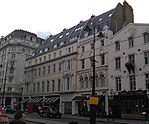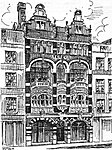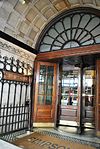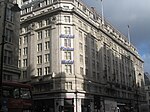Savoy Chapel

The Queen's Chapel of St John the Baptist in the Precinct of the Savoy, also known as the Queen's Chapel of the Savoy, is a church in the City of Westminster, London. Facing it are 111 Strand, the Savoy Hotel, the Institution of Engineering and Technology and – across the green to its side – the east side of Savoy Street. It is designated as a Grade II* listed building.The chapel sits on the site of the Savoy Palace, once owned by John of Gaunt, that was destroyed in the Peasants' Revolt of 1381. Gaunt's Duchy of Lancaster, the owner of the site of the palace, eventually came into the hands of the monarch. Work was begun on the chapel in 1502 under King Henry VII and it received its first charter to operate as a hospital foundation in 1512 to look after 100 poor and needy men of London. The hospital had fallen into ruin by the late 18th century; only the chapel survived the consequent demolition, which as to the hospital's eastern end was ceded for an approach to Waterloo Bridge. The chapel is owned by the Duchy of Lancaster and as such is a Royal Peculiar – outside the jurisdiction of a diocese, but under that of the reigning monarch. The church is the chapel of the Royal Victorian Order, whose full gathering takes place at St George's Chapel, Windsor Castle, to accommodate those numbers.
Excerpt from the Wikipedia article Savoy Chapel (License: CC BY-SA 3.0, Authors, Images).Savoy Chapel
Savoy Steps, City of Westminster Covent Garden
Geographical coordinates (GPS) Address Website External links Nearby Places Show on map
Geographical coordinates (GPS)
| Latitude | Longitude |
|---|---|
| N 51.5105 ° | E -0.1199 ° |
Address
Queen's Chapel of the Savoy
Savoy Steps
WC2R 0DA City of Westminster, Covent Garden
England, United Kingdom
Open on Google Maps









